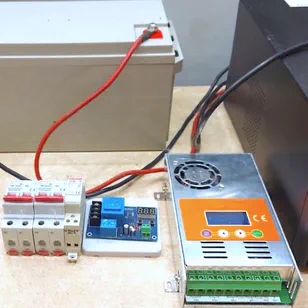Introduction
When selecting the power rating for an inverter in an uninterruptible power supply (UPS) system or a solar power system, it’s essential to calculate the load accurately. One critical factor to consider is the inrush currents of household appliances.
What Are Inrush Currents?
Certain equipment, including household appliances, can draw significantly more power for a brief moment (fractions of a second) when they are switched on than they do during normal operation.
- Refrigerators: 5-8 times higher than running power
- Air Compressors: 4-6 times higher than running power
- Well Pumps: 1.5-2 times higher than running power
Do All Appliances Have Inrush Currents?
Not necessarily. Modern appliances often have features to mitigate inrush currents:
- Inverter Drive: The motor is controlled by an inverter that gradually ramps up the power, eliminating inrush currents.
- Soft Starter: A power electronics device that organizes a slow start for the motor shaft and then switches to a bypass for direct connection.
How to Account for Inrush Currents When Choosing an Inverter
Here are a few considerations:
- Inverters or UPS Units Up to 1 kW: Most cannot start refrigerators. For units rated at 1 kW and above, there are no problems.
- 48V UPS or Inverters from 5 kW: Ignore inrush currents and focus solely on the running power.
- 24V Systems from 3.2 kW: Consider the inrush currents for compressors and pumps from 0.75 kW and above. For refrigerators, consider only the running power.
Conclusion
While accounting for inrush currents can be straightforward, it does require careful consideration, especially for systems with lower power ratings. By understanding the requirements of your appliances and the capabilities of your inverters, you can ensure a reliable and efficient power system.




